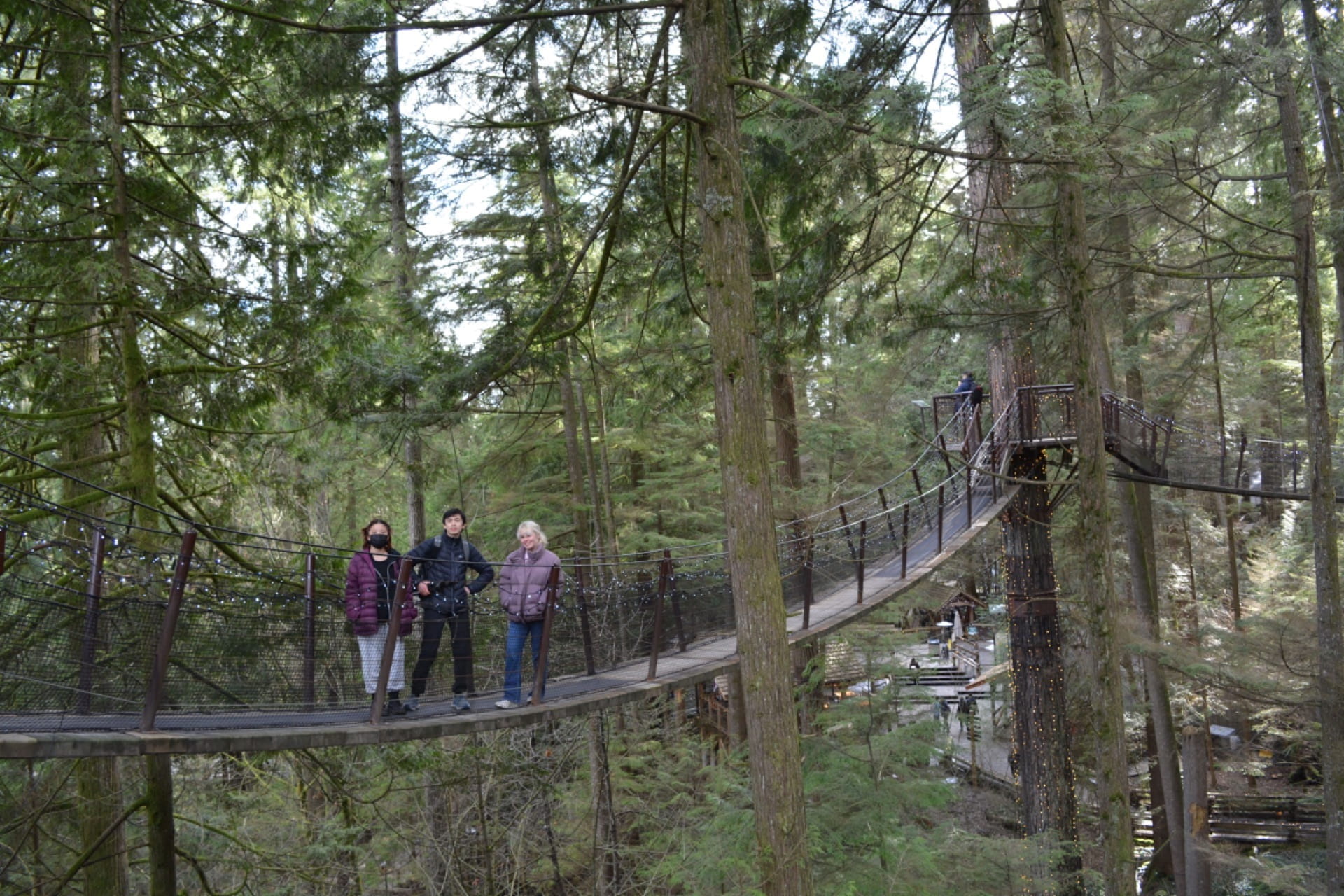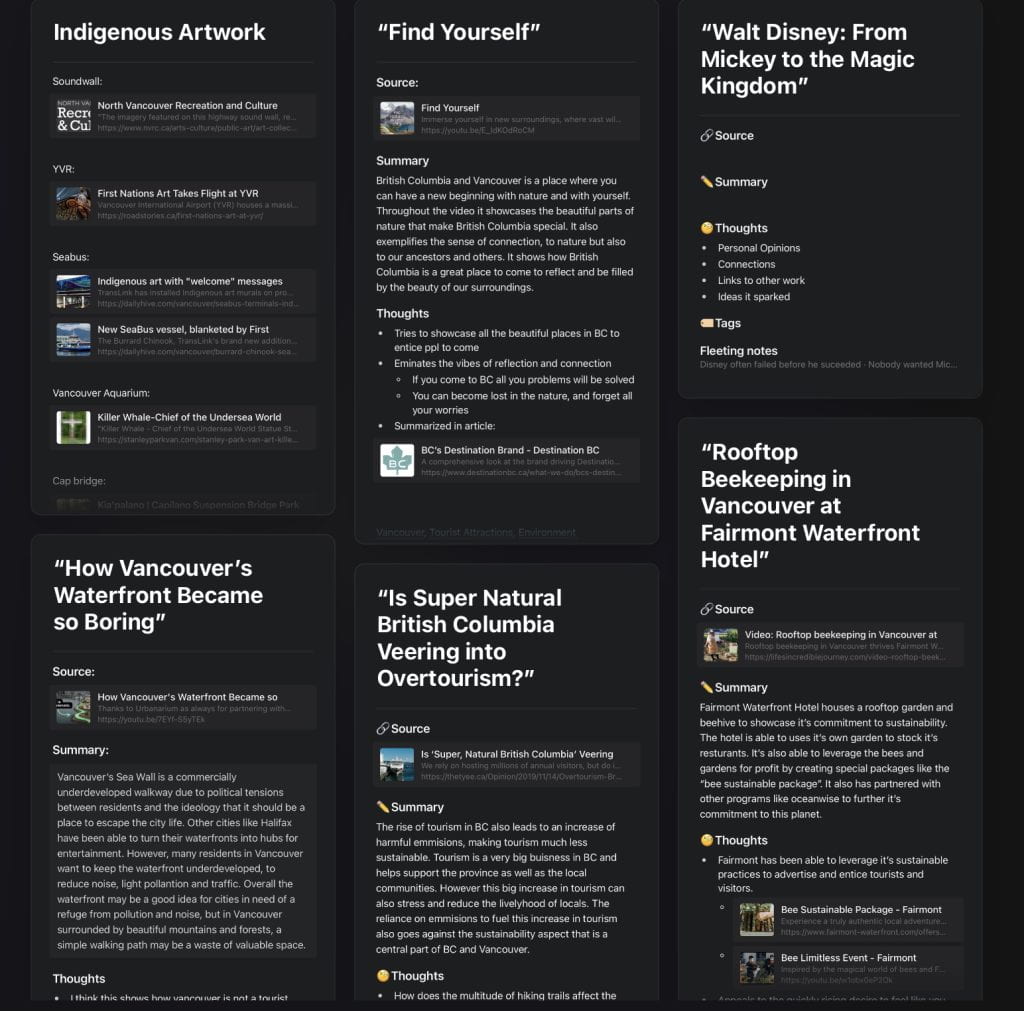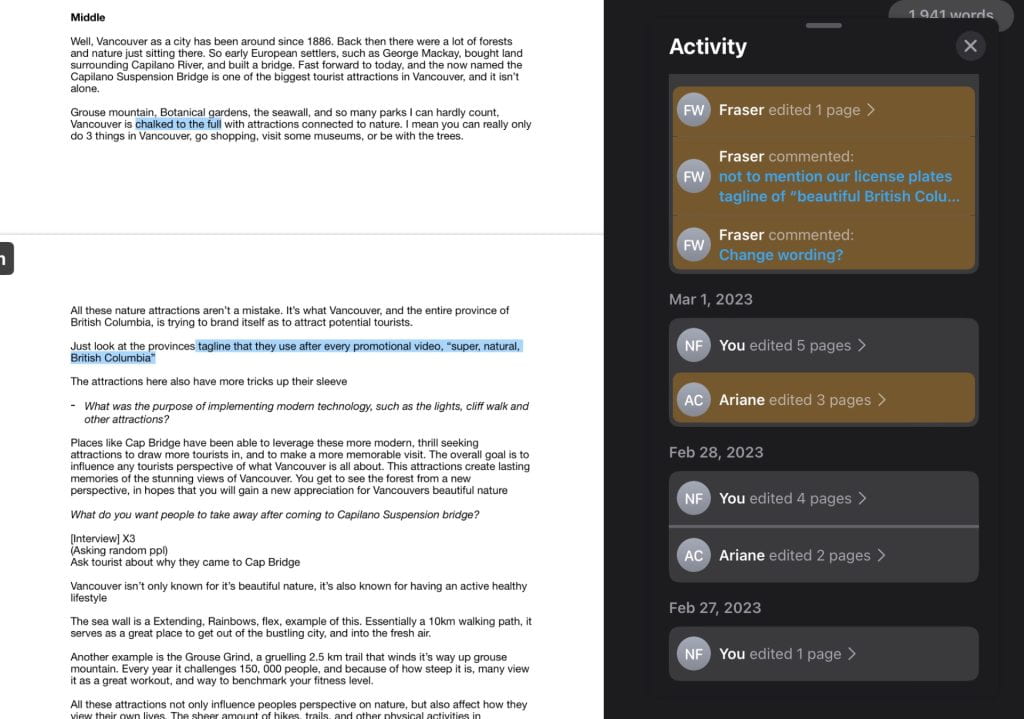
Yep, that’s me. You’re probably wonder how I ended up in this situation. Well I’d like to welcome you to Vancouver, the hot new tourist destination for all those who weren’t able go to Florida.
Power of imagination! That was the latest title of our latest project, primarily focusing how the Disney Theme parks shape and influence the cultural, economic, psychological, and social experiences of its visitors. As you can probably tell already, myself along with a few others (Ariane, Ben, Claire, and Fraser), were unable to attend the field study. Unfortunately this didn’t mean we could just skip school for a week, and were instead given a slightly modified version of the driving question “How do Vancouver’s tourist attractions shape and influence the cultural, economic, psychological, and social experiences of visitors?” Our final answer to that question came in the form of a short video essay that you can check our here:
So now that we know what we’re dealing with, let’s talk about all the ways this project went wrong.
We started by doing some research on Vancouver, and adding it to our new personal knowledge management system (PKM for short).

I ended up with around 7 PKM entries on Vancouver, and even more practice on various other topics like Disney. All this practice meant that I good pretty familiar with writing summaries, however there is still a lot to learn and improve on when it comes to note taking. These PKM entries were useful for generating ideas, as well as combining with personal experiences to get a better idea of what we wanted to talk about in our video. Moving forwards it’s going to be very important to keep my PKM organized so that I can continue to make connections between many different documents.
One of the hardest parts of this project was how open it was. Our instructions boiled down to making a video about Vancouver tourism, and that’s it. This pretty wide open prompt was really scary to deal with, as we were always questioning if what we were doing was right. This is most clearly seen in our screen play.

At the start of the project, we created a screen play with all the dialogue and shots we wanted to have. However we were never quite satisfied with it. We found that the video did not have a central argument or thesis that would answer our driving question. As a result, we would brainstorm more ideas.
- How the sea wall and grouse grind showcase Vancouvers intentions on being an active place to live.
- How the indigenous artwork at YVR advertises Vancouvers connection to indigenous culture and the land.
- How the carbon fuelled tourism industry is contradictory to Vancouvers environmental culture.
These were just some of the many ideas that were added to the increasingly bloated video. It got to the point where the screen play was 2,000 words long, and almost impossible to navigate. We realized that this screenplay was spiralling out of control, so the decision was made to completely cut it.

Drawing from the 2,000 word monstrosity, we came up with three central points we thought answered our driving question through the more specific lens of Capilano suspension bridge. With these three central points, we wrote 600 words of dialogue that would go on to become our final screenplay for the video. Ultimately, the whole screen play fiasco bled a lot of valuable time, and as a result the final screen play isn’t perfect. I think it’s also a shame we cut many of the old ideas, as they have a lot of potential and would be very interesting to explore further. In the end we just couldn’t find a way to fit all those idea’s into one cohesive video, and we were forced to cut our losses and move on.

Unfortunately the filming was filled with even more problems to deal with. The biggest being our main interview that we conducted with Brendan Wong, the outside sales coordinator for Capilano suspension bridge (Big thanks to Brendan for putting up with us and answering all of our questions). We put quite a lot of effort into this interview, wording the questions to make sure we would get the responses we needed. Overall the interview went really well, and we got a lot of footage that we could use for our final video, at least that’s what we thought at the time. You may notice that there is never an interview with Brendan in the final video. Unfortunately the entire video was scrapped after rewatching the footage once we got back. It turned out that the iPhone we were using to record the video had a really odd audio bug, in which the audio would intermittently become very muffled for short periods of time.
You can hear what happened to our audio here:
As you can imagine this was incredibly annoying, not only because it made our entire interview unusable, but because of how close we were to catching it. Before we recorded the interview, we made sure to do a sound check to make sure the audio sounded good. After listening to a few short test sentences, the audio seemed to be in perfect working condition. However, because of how the bug only happens at random intervals, it managed to go completely unnoticed until it was too late.
This bug, although ruining a big part of our video, was also a good reminder that stuff can go wrong, and why back up plans as well as adapting on the fly are so important. You can be sure that I’m triple checking the audio from now on.
Eventually after a lot of deliberation, the decision was made, not for the first time in this project to cut our losses and move on. Thankfully not all was lost, and we did actually have a backup plan. We ended up recording four more smaller interviews with tourists in the park. (Thank you to all who decided to take time out of their day to help us). One of these interviews met the same fate as the previous interview, but the other three managed to escape mostly unscathed. This let us still have a interview, even if that wasn’t the original plan.
Our next big challenge to go through was the editing. To save on time, and to prevent dumping the entire workload onto one person the editing was spilt between our group members. Normally this isn’t the best as the end video can turn out feeling disjointed and without any flow. However I felt comfortable doing this as I used the same strategy when creating the Romeo and Juliet video. The reason I think this strategy works is because of how we put each section together. When everybody is done editing their section, it’s handed off to our “master editor”, in our case Fraser, who could then have full control to match audio, cuts, add music, and overlay any b-roll we unknowingly repeated too many times. This process creates an end product that seems cohesive, and I’m overall proud of how the overall video turned out. even after multiple people have worked on it.

My overall feelings on the video are a bit mixed. For one I’m really proud of how we were able to push through our troubles to make the video happen. I think it’s concise, and has some strong arguments to conclusively answer our driving question. However I can’t help feeling disappointed at what the video could have been. There were so many interesting idea’s to explore, that even in hindsight it’s hard to tell if we made the right decision to cut them. Despite how the final product turned out, I am very proud of how we were able to make these hard decisions in the moment, especially during the week where we were left to our own devices. In the end this project really tested my critical thinking skills as well as time management, especially in a group setting. What I’m most happy about was my ability to make important decisions, like admitting to when I’m wrong, or what we should focus on, and being confident in those decisions. Those have been skills that I’ve been working on for a while, and I think showcased well in this project. Anyways that’s all I have for this project.
See you next time,
Nolan 🏝️